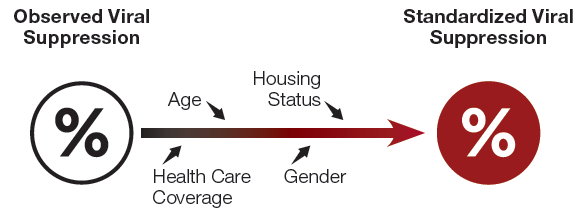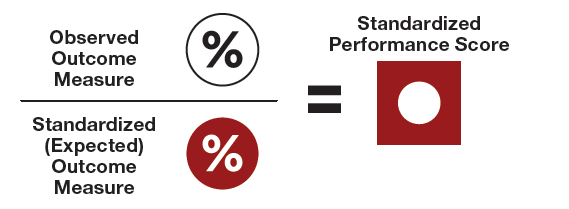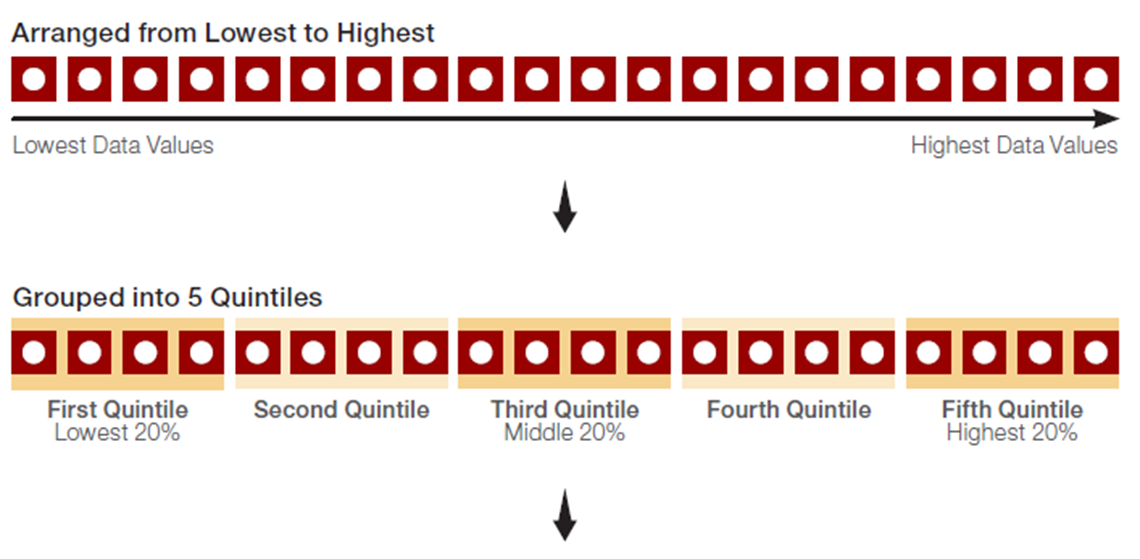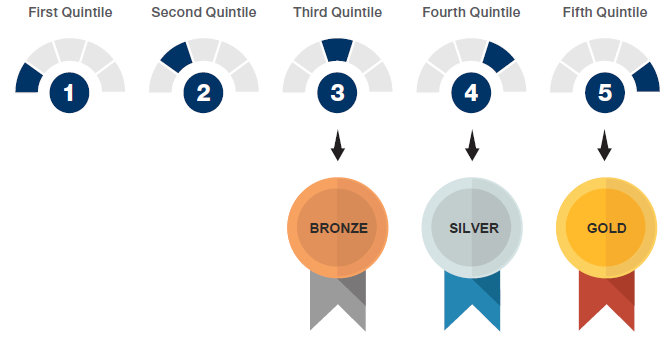About Standardized Performance
Recipients funded by the RWHAP differ in many important aspects, including the characteristics of the clients they serve. The RWHAP Compass Dashboard provides standardized performance tools to support jurisdictional comparison and evaluation.
Standardized performance allows “like-to-like” comparison of jurisdictions that may serve different populations.
Step 1: Standardized Outcome Measure
A statistical model is applied to the observed outcome measure (viral suppression or retention in care) that adjusts for key client characteristics.
The Observed Outcome Measure is calculated based on data reported through the RWHAP Services Report.
The Standardized Outcome Measure is the expected rate given the age, gender, housing status, and health care coverage of the clients in this jurisdiction.
These four variables were chosen based on consultation with a panel of technical experts and previous work by the Centers for Medicare & Medicaid Services (CMS).*
Step 2: Standardized Performance Score
The observed outcome measure is compared to the standardized outcome measure to calculate the standardized performance score.
A jurisdiction with a score greater than one is performing better than expected, given the client populations they serve.
A jurisdiction with a score less than one is not meeting their expected performance, given the client populations they serve.
Step 3: Assign Range
Standardized Performance is reported as a quintile to demonstrate where a score falls within the range of all jurisdictions
The standardized performance score is a tool to understand relative performance between jurisdictions.
A score in the first quintile is in the lowest 20%; a score in the third quintile is in the middle 20%; and a score in the fifth quintile is in the top or highest 20% of jurisdictions in the U.S.
Dashboard View
Jurisdictions in the top three quintiles display a badge. Standardized performance in the fifth quintile receives a gold badge, standardized performance in the fourth quintile receives a silver badge, and standardized performance in the third quintile receives a bronze badge.
Benchmarking Performance by Jurisdiction Screen
When the Benchmarking Performance by Jurisdiction screen (Figure 6) first loads, it displays the most recent data for the first alphabetical state (Alabama). Select a different jurisdiction from the dropdown menus to update the view.
Figure 6
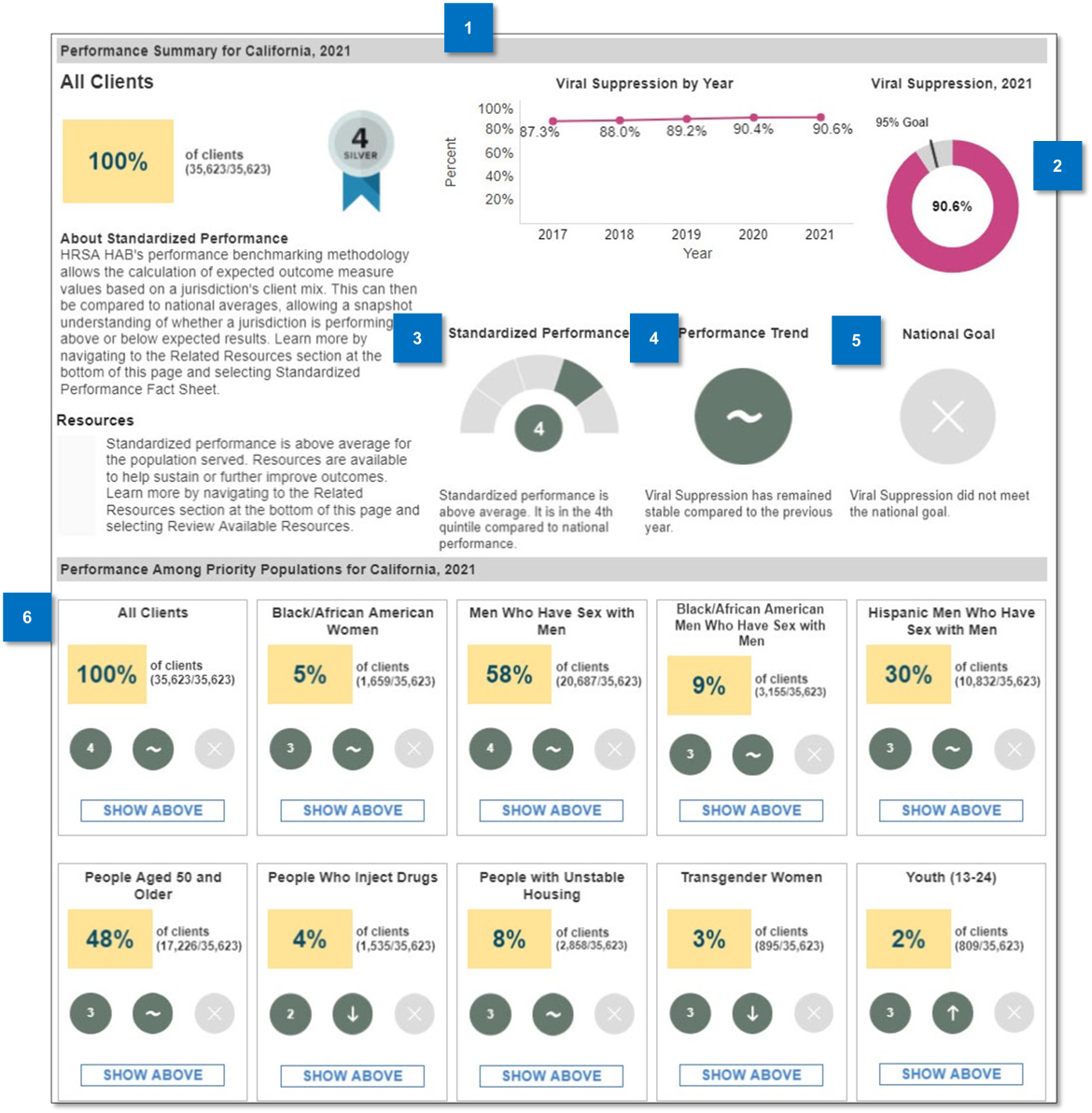
-
Observed Outcome Measure by Year
This line chart plots the observed viral suppression or retention in care over a five-year period. -
Outcome Measure
This donut chart shows the observed viral suppression or retention in care for the selected data year. It also shows the national goal for the selected outcome measure. -
Standardized Performance
This gauge shows the standardized performance for the selected outcome measure. A score in the first quintile is in the bottom 20%; a score in the third quintile is in the middle 20%; and a score in the fifth quintile is in the top 20%. -
Performance Trend
This icon shows whether the observed rate of the selected outcome measure for the jurisdiction has increased, decreased, or stayed the same as compared to the previous data year. -
National Goal
This icon is a green checkmark if the jurisdiction has met the National HIV/AIDS Strategy (NHAS) indicator for the selected outcome measure based on their observed rate of the selected outcome measure. It is a gray “x,” if the national goal has not yet been met. -
Performance among Priority Populations
These figures show performance among specific, priority populations and include the percentage of clients within that population and the standardized performance, trend, and national goal icons.
